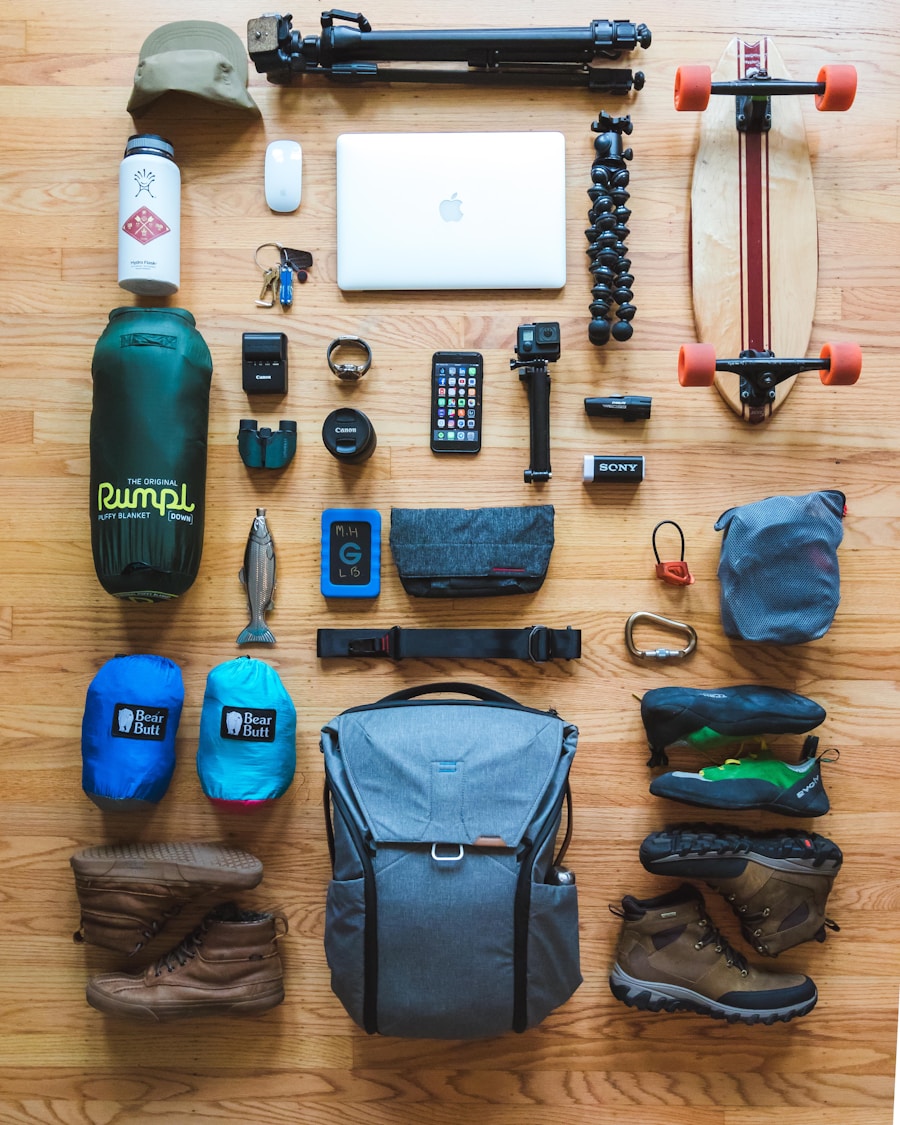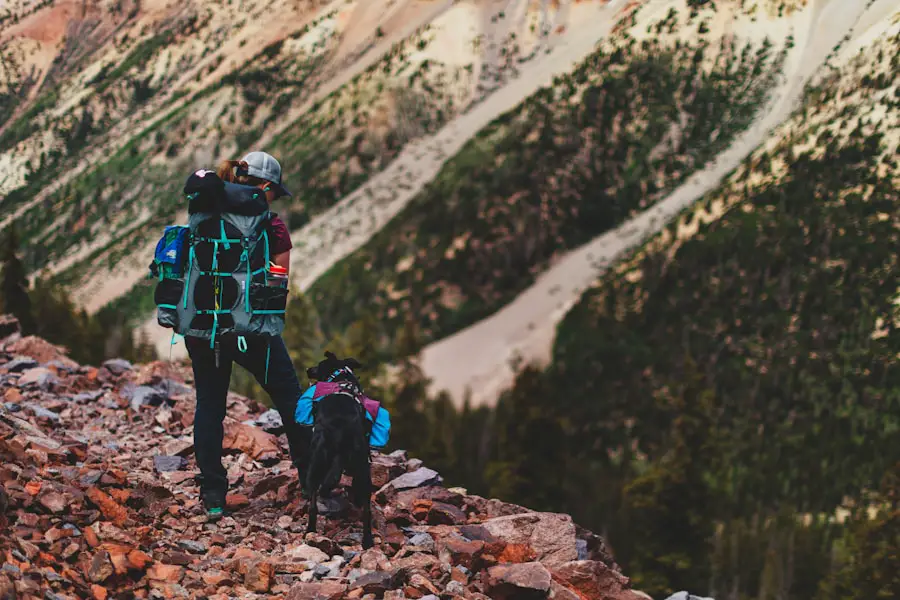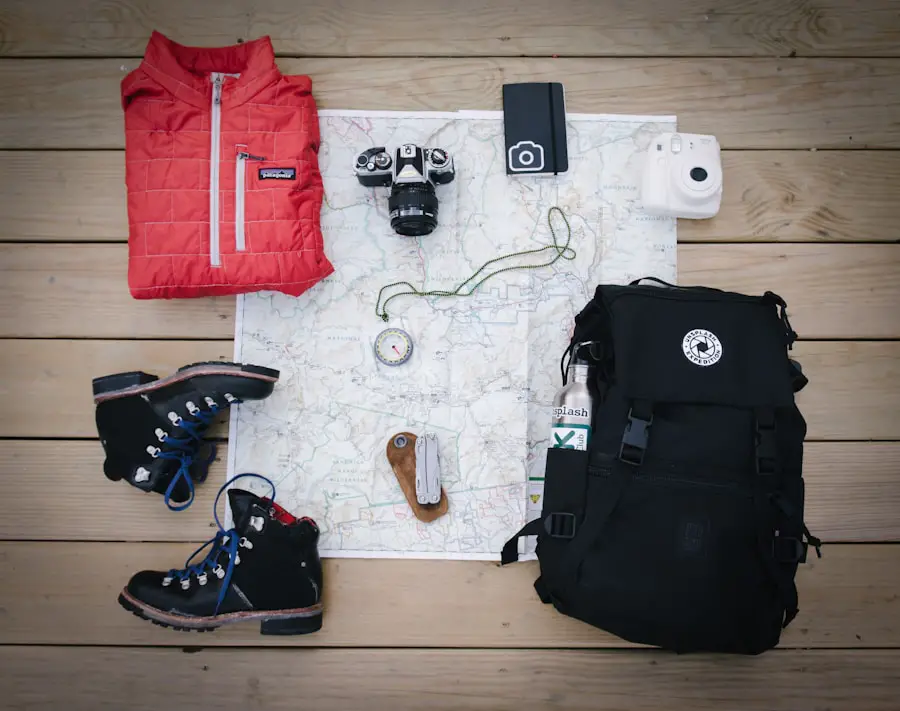When embarking on an outdoor adventure, the choice of clothing and footwear is paramount to ensure comfort, protection, and adaptability to changing weather conditions. The layering system is a fundamental principle in outdoor clothing, consisting of three main layers: the base layer, the insulating layer, and the outer layer. The base layer, typically made from moisture-wicking materials such as merino wool or synthetic fabrics, is designed to keep sweat away from the skin.
This is crucial during physical activities, as it helps regulate body temperature and prevents chilling. The insulating layer, often composed of fleece or down, traps heat and provides warmth in cooler conditions. Finally, the outer layer, usually a waterproof and windproof shell, protects against environmental elements like rain, snow, and wind.
Footwear is equally critical in outdoor settings. Hiking boots or shoes should provide adequate support, traction, and protection for the feet. A well-fitted boot with a sturdy sole can prevent injuries such as sprains or blisters during long treks.
Additionally, waterproof options are beneficial in wet conditions, while breathable materials help keep feet dry in warmer climates. It’s also essential to consider the terrain; for rocky or uneven paths, boots with ankle support can enhance stability and reduce the risk of falls. Choosing the right socks is another important aspect; moisture-wicking and cushioned socks can significantly improve comfort and prevent blisters.
Key Takeaways
- Layering is key for clothing to regulate body temperature and stay dry
- Choose footwear based on terrain and weather conditions for comfort and safety
- Invest in quality gear and equipment for durability and reliability
- Carry navigation tools and know how to use them for safe travel
- Prioritize lightweight, high-energy foods and stay hydrated on the trail
- Consider the weight and packability of shelter and sleeping gear
- Pack personal care items for comfort and hygiene on the trail
- Have a well-stocked first aid kit and know basic first aid skills for emergencies
Gear and Equipment
The selection of gear and equipment can make or break an outdoor experience. Essential items include a reliable backpack that fits comfortably and distributes weight evenly across the body. A good backpack should have multiple compartments for organization and be made from durable materials to withstand rough handling.
When choosing a backpack, consider the duration of your trip; day packs are suitable for short excursions, while larger backpacks are necessary for multi-day hikes where additional gear and supplies are required. In addition to backpacks, other critical gear includes tents, sleeping bags, and cooking equipment. Tents should be lightweight yet durable, with a design that can withstand various weather conditions.
For instance, a three-season tent is ideal for spring through fall camping, while a four-season tent is better suited for winter conditions. Sleeping bags should be chosen based on temperature ratings; a bag rated for colder temperatures will ensure warmth during chilly nights. Cooking equipment can range from portable stoves to lightweight cookware; options like compact camp stoves that use propane or butane fuel are popular for their efficiency and ease of use.
Navigation and Safety

Navigating through unfamiliar terrain requires reliable tools and knowledge to ensure safety and direction. A topographic map is an invaluable resource that provides detailed information about the landscape, including elevation changes, water sources, and trails. Learning how to read a map is essential; understanding contour lines and symbols can help hikers identify their location and plan their route effectively.
In conjunction with a map, a compass is a traditional yet effective navigation tool that can guide adventurers even when technology fails. In recent years, GPS devices and smartphone applications have become increasingly popular for navigation. These tools offer real-time tracking and can provide detailed information about trails and points of interest.
However, reliance solely on technology can be risky; battery life can be unpredictable in remote areas, making it crucial to have backup navigation methods. Safety also extends to understanding weather patterns and being prepared for sudden changes. Carrying a weather radio or checking forecasts before heading out can help avoid dangerous situations.
Food and Water
| Category | Metrics |
|---|---|
| Food | Calories consumed per day |
| Food | Percentage of population with access to nutritious food |
| Water | Water consumption per capita |
| Water | Percentage of population with access to clean drinking water |
Proper nutrition and hydration are vital components of any outdoor adventure. Planning meals ahead of time ensures that you have the necessary energy to sustain physical activity throughout the day. Lightweight, non-perishable foods such as dehydrated meals, energy bars, nuts, and dried fruits are excellent choices for hiking trips.
These foods are not only easy to pack but also provide essential nutrients without adding excessive weight to your gear. For longer excursions, consider meal planning that includes a balance of carbohydrates, proteins, and fats to maintain energy levels. Water is equally important; staying hydrated is crucial for physical performance and overall health.
Depending on the location of your adventure, water sources may be scarce or contaminated. Carrying a portable water filter or purification tablets can ensure access to safe drinking water from natural sources like rivers or lakes. Additionally, it’s wise to carry extra water bottles or hydration bladders to maintain an adequate supply throughout your journey.
Understanding how much water you need based on activity level and climate conditions can help prevent dehydration.
Shelter and Sleeping
Creating a comfortable sleeping environment is essential for recovery during outdoor adventures. The choice of shelter often depends on the type of trip; options range from tents to hammocks or even bivy sacks for ultralight enthusiasts. Tents provide protection from the elements while offering space for gear storage; selecting a tent with good ventilation can help reduce condensation inside during humid nights.
For those who prefer a minimalist approach, hammocks can be an excellent alternative when trees are available; they offer comfort while allowing for quick setup. Sleeping pads are another critical component of a good night’s sleep outdoors. They provide insulation from the cold ground while adding cushioning for comfort.
There are various types of sleeping pads available, including inflatable options that pack down small and foam pads that offer durability without the need for inflation. A quality sleeping bag tailored to the expected temperatures will ensure warmth throughout the night; features such as draft collars and hoods can enhance insulation further.
Personal Care and Hygiene

Maintaining personal care and hygiene while outdoors is often overlooked but is essential for comfort and health during extended trips. Basic hygiene items such as biodegradable soap, toothbrushes, toothpaste, and toilet paper should be included in your packing list. Biodegradable soap is particularly important as it minimizes environmental impact when washing dishes or cleaning oneself near natural water sources.
Additionally, carrying hand sanitizer can help maintain cleanliness when water access is limited. Insect repellent is another crucial item for personal care, especially in areas prone to mosquitoes or ticks that can carry diseases. Choosing a repellent with DEET or natural alternatives can provide effective protection against bites.
Sunscreen is equally important; applying a broad-spectrum sunscreen with an appropriate SPF protects against harmful UV rays during long hours spent outdoors. Lip balm with SPF can also prevent chapped lips caused by sun exposure or wind.
Emergency and First Aid
Being prepared for emergencies is a fundamental aspect of outdoor activities that cannot be overlooked. A well-stocked first aid kit should include items such as adhesive bandages, antiseptic wipes, gauze pads, adhesive tape, pain relievers, and any personal medications required by group members. It’s also beneficial to include items like blister treatment kits and snake bite kits if venturing into areas where these risks are present.
In addition to physical supplies, knowledge of basic first aid principles is invaluable in emergencies. Understanding how to treat common injuries such as sprains, fractures, or cuts can make a significant difference in outcomes during outdoor adventures. Taking a wilderness first aid course can equip individuals with skills to handle various situations effectively until professional help is available.
Furthermore, carrying a whistle or signaling device can aid in communication during emergencies when visibility is low or when separated from the group.
Miscellaneous Items
Beyond the essentials already discussed, several miscellaneous items can enhance the outdoor experience significantly. A multi-tool or knife is an invaluable addition; it serves various purposes from food preparation to gear repair or even first aid applications in emergencies. A headlamp or flashlight with extra batteries ensures visibility during nighttime activities or emergencies after dark.
Additionally, packing a lightweight camp chair or portable seating option can greatly improve comfort during breaks or at camp sites. A journal or book can provide entertainment during downtime while allowing for reflection on the adventure experience. Finally, including a small dry bag for electronics or valuables protects them from moisture during unexpected rain or river crossings.
In conclusion, preparing for an outdoor adventure involves careful consideration of various factors ranging from clothing choices to emergency preparedness. Each element plays a crucial role in ensuring safety, comfort, and enjoyment while exploring nature’s wonders.
If you’re planning a hiking trip, it’s important to pack the right gear to ensure a safe and enjoyable adventure. One essential item to bring along is a universal travel adapter, like the ones recommended in this article. Having the right adapter can make a big difference in staying connected and powered up while on the go. Additionally, you may want to consider checking out some amazing tent camping spots near you for a unique outdoor experience, as highlighted in this article. And if you’re looking for a convenient way to explore your destination once you arrive, a travel scooter could be a great option, as discussed in this article. Happy hiking!
Love travel? Join Our Facebook Community For More Tips.
FAQs
What are the essential items to pack for a hiking trip?
Some essential items to pack for a hiking trip include a backpack, water bottles, navigation tools (map, compass, GPS), first aid kit, extra clothing layers, food and snacks, and a headlamp or flashlight.
What type of clothing should I pack for a hiking trip?
It is important to pack moisture-wicking and quick-drying clothing for a hiking trip. This includes a moisture-wicking base layer, insulating layer, and a waterproof and windproof outer layer. Additionally, pack extra socks, a hat, and gloves for varying weather conditions.
What kind of footwear is recommended for a hiking trip?
For a hiking trip, it is recommended to wear sturdy and comfortable hiking boots or shoes with good traction. It is important to choose footwear that provides ankle support and protection from rocks and debris on the trail.
What food and snacks should I pack for a hiking trip?
Pack lightweight and high-energy snacks such as trail mix, energy bars, and dried fruits. For meals, consider packing lightweight and easy-to-prepare options such as dehydrated meals, instant oatmeal, and nut butter sandwiches.
What safety items should I pack for a hiking trip?
Some safety items to pack for a hiking trip include a first aid kit, emergency whistle, multi-tool or knife, fire starter, and a personal locator beacon or satellite messenger for remote areas.
What are some optional items to consider packing for a hiking trip?
Optional items to consider packing for a hiking trip include trekking poles, insect repellent, sunscreen, a camera, and a portable water filter or purification tablets for accessing water from natural sources.
